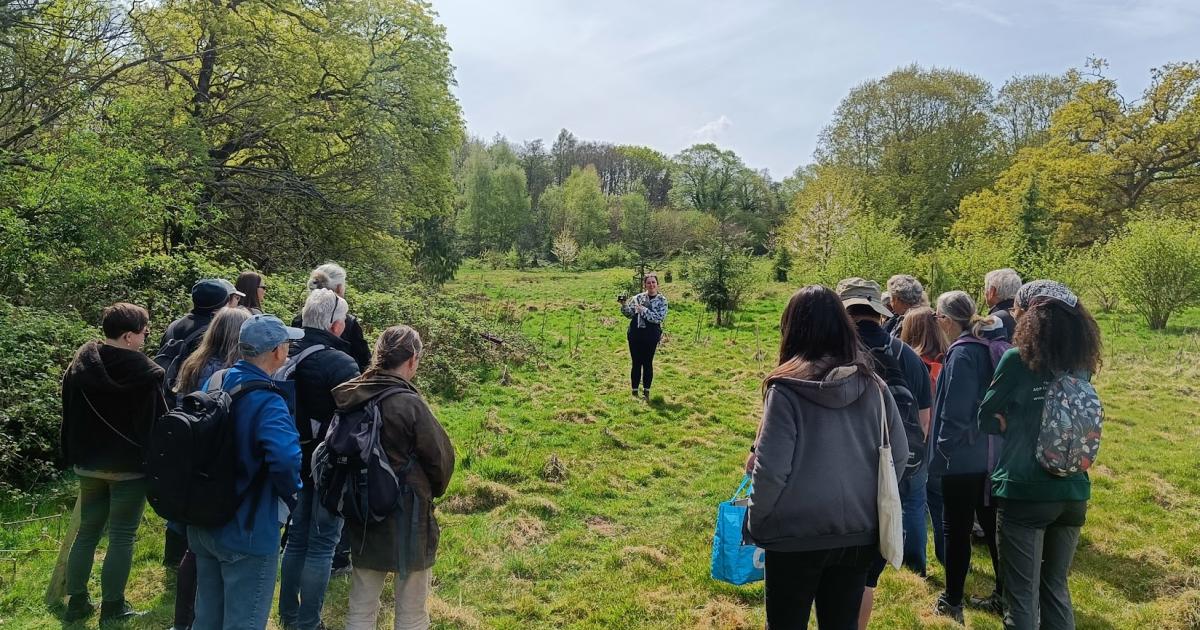A dedicated team of conservation volunteers has found the first evidence of Hazel Dormice at the Eastern Road Nature Reserve, in Lindfield, since 2007.
The species has been classified as ‘vulnerable’ and has seen its population drop by 70 per cent since 2000.
Dormouse hiding. (Image: Frank Hecker)
The volunteers found the dormice after setting up a survey at the nature reserve.
They were trained by the Lost Woods of the Low Weald and Downs project to install tunnels to monitor dormouse footprints.
The species was confirmed at the site after the volunteers found the distinctive ‘cheese triangle’-shaped footprints in the tunnels.
Michael Blencowe, Lost Woods senior community development worker for Action in Rural Sussex, described the moment of discovery: “I couldn’t believe they found them, it was remarkable. When we started training local groups, I thought the chance of finding any was very, very low; populations have been decimated due to habitat loss and climate change.”
Trained volunteers are undertaking ‘nibbled nut’ surveys across the Low Weald this autumn. (Image: WTML)
“Now, we can work with ecologists to protect the dormice at this site and encourage this population’s recovery.”
Alex Le Seelleur, Chair of the Friends of Eastern Road Nature Reserve, said: “We’re absolutely thrilled to have found Hazel Dormice in our nature reserve.
“The decline in dormice populations over the past two decades is a huge cause for concern, so to know they are still here is incredibly exciting – it shows just how important these pockets of habitat are.”
The Friends of Eastern Road Nature Reserve volunteers will continue their work with the Lost Woods project to survey the reserve and will receive expert advice on maintaining and creating vital Hazel Dormouse habitat.
Dormouse footprints. (Image: Friends of Eastern Road Nature Reserve)
The Lost Woods team is optimistic that this is just the beginning.
Other trained volunteers are undertaking ‘nibbled nut’ surveys across the Low Weald this autumn, searching woodland floors for the distinctive chewing pattern uniquely left by hazel dormice.
To get involved in the Lost Woods project or to find out more about the Friends of Eastern Road Nature Reserve, including how to volunteer, visit their website.

